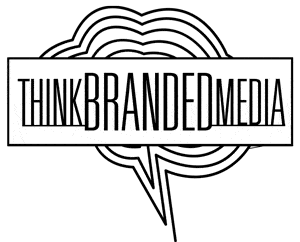How To Use Color To Increase Brand Awareness & Marketing
The next time you go to the grocery store, pay attention to the packaging of the products. Notice the colors they chose for their logos and their products and then ask yourself if those colors were selected randomly or if they were picked for a specific reason. More often than not, the colors used for marketing are chosen specifically either to make the product stand out and catch your eye or to evoke a particular emotional response. You may not pick up on it, but your brain does.
Humans are visual creatures, and studies show our brains process images 60,000 times more quickly than words. The simple fact is that our brains respond to images and color better than words, which is why the color is so important for marketing and branding.
In this article, we take a basic overview of color and see why it’s so important and how you can use it to your advantage.
Color Theory Basics
If you ever had art class as a kid, you may have seen the color wheel. It’s based on the colors of red, yellow and blue as the primary colors, and orange, green, and purple as the secondary colors, which are derived from mixing the primary colors. Also, when you combine primary and secondary colors, you get tertiary colors.
One way to use color to your advantage in marketing or branding is to use colors opposite to one another on the color wheel (called complementary colors), such as blue and orange. When you’re in the grocery store, look at how many products use blue and orange in their packaging and their logos; the same is true for red and green.
Another aspect of color to study is how color behaves with other colors. For example, a red dot inside a black circle looks much different from a red dot inside a white circle, and each will evoke a different response from the viewer.
The Emotion of Color
Like words, color can make us feel emotions. Think about the sunset, the vibrant, warm oranges, yellows, and reds. It feels warm and pleasant, right? Now, think about a gray sky, with blues and purples; it feels cold and depressed. Marketers apply the same techniques when advertising and marketing their products. If you want the user to get feelings of nature, cleanliness, and something wholesome, you might use subtle green colors. If you’re going to market a product to men that suggest power and strength, you might opt for black and red.
Again, pay attention to the brands you use and see every day and notice what colors they use in their logos and packaging and ask why they chose the color they did?
Companies that want to project something wholesome, calm or trustworthy opt for blues and greens, while other companies that want to project excitement might use red. Orange makes people feel warm, cheerful and upbeat while yellow can make people feel optimistic. If you want your brand to look upscale, you might choose purple, which is associated with royalty or spirituality. Green can make one think of health and nature. Black says authority, power, and strength, while white suggests purity and being clean.
The point is when you make a product or service; you need to ask yourself what feeling you want to present when people look at it. You may not realize it, but people decide immediately upon seeing your logo or brand before they ever find out anything about the company, product or service, which is why it’s vital you don’t pick colors randomly.
How To Use Color For Your Target Audience
Now that you have a basic understanding of color, you need to be aware of who your target audience is and what they expect before you design your product, logo or service. Let’s look at a famous brand, McDonald’s and the colors they chose which are red and yellow. When combined, these colors are energetic and exciting (think of red and yellow fire trucks), which is perfect for getting their target audience, young kids, excited about getting their food.
On the other side of the spectrum, look at a company like UPS who uses brown as their primary color. Brown isn’t an exciting color; instead, it suggests stability and trustworthiness, which is what the company wants you to associate when shipping items.
Also, while some may not like to admit it, men and women have different reactions to color, so while you might think green and white look great together, if you’re targeting men, this might not be the best solution. And the same holds true if you’re using pink, which is often used for marketing to women.
So, when you’re designing, know who you’re targeting and then pick your colors accordingly.
Be Consistent With Color
When you look at a company with a recognizable logo such as Ford, you probably see a blue oval. However, you probably didn’t know that Ford uses a specific blue, for print and the web, so the color remains consistent across the brand. In fact, the company has specific guidelines that must be followed when printing the logo in color or in black and white so every time you see the Ford logo, it looks the same.
Now, while your company might not be as big as Ford, it’s vital to establish color consistency if you want your brand to be recognizable no matter if it’s in print or on the web. Pick a palette of two or three colors and stick with them in all of your marketing.
When used effectively, color is a fantastic tool you can use to bring awareness to your brand and evoke a feeling before your customers buy your product or service. Remember, don’t pick colors just because you like them, pick them to attract your customers and get them excited about your brand.

